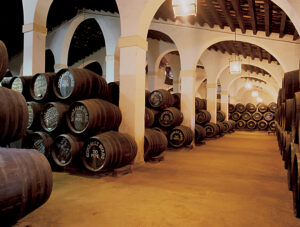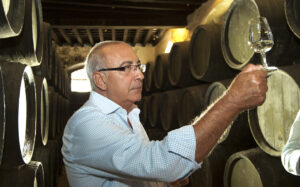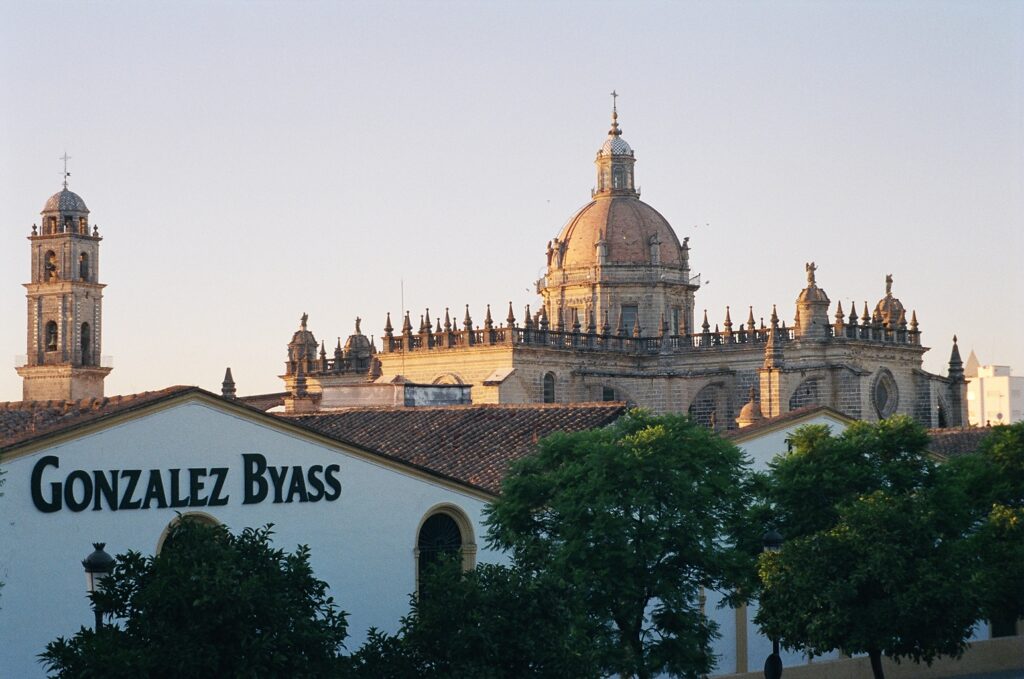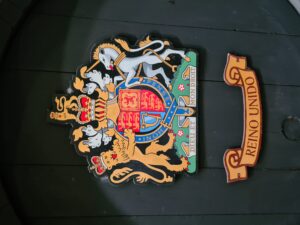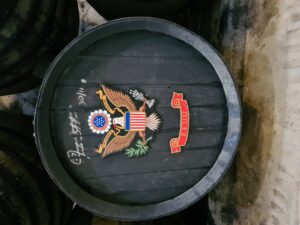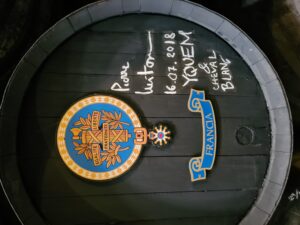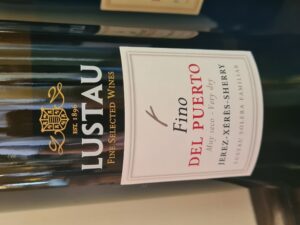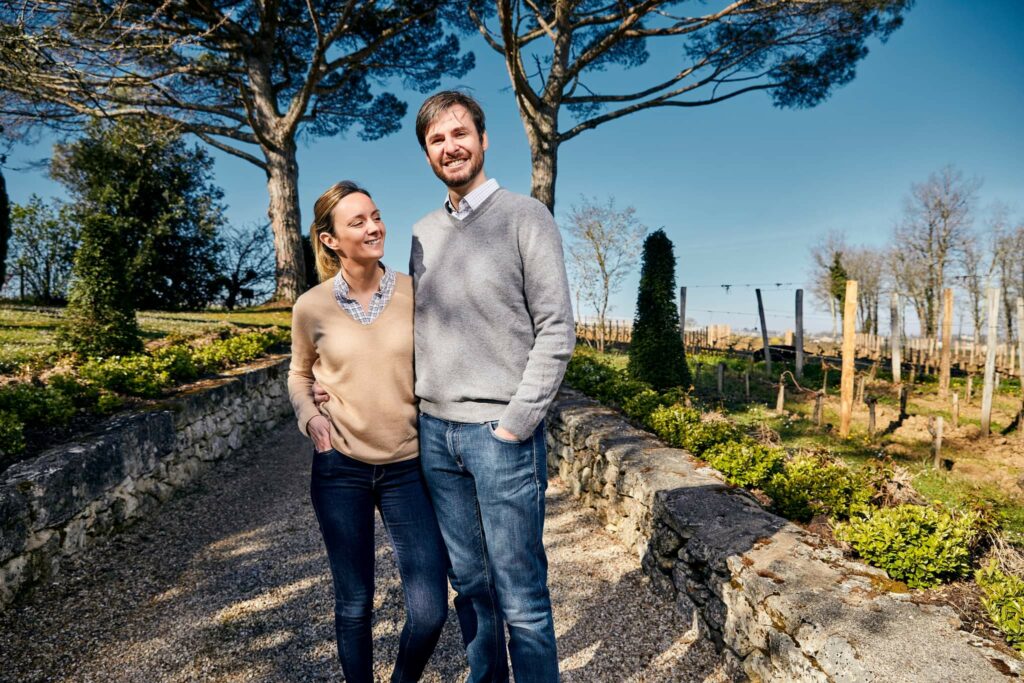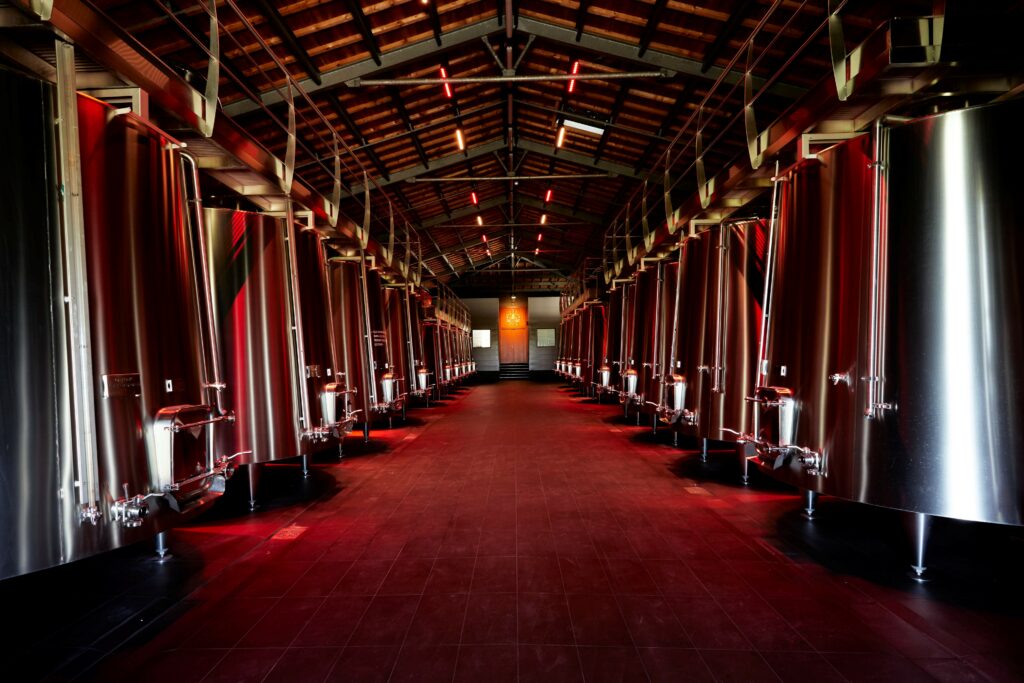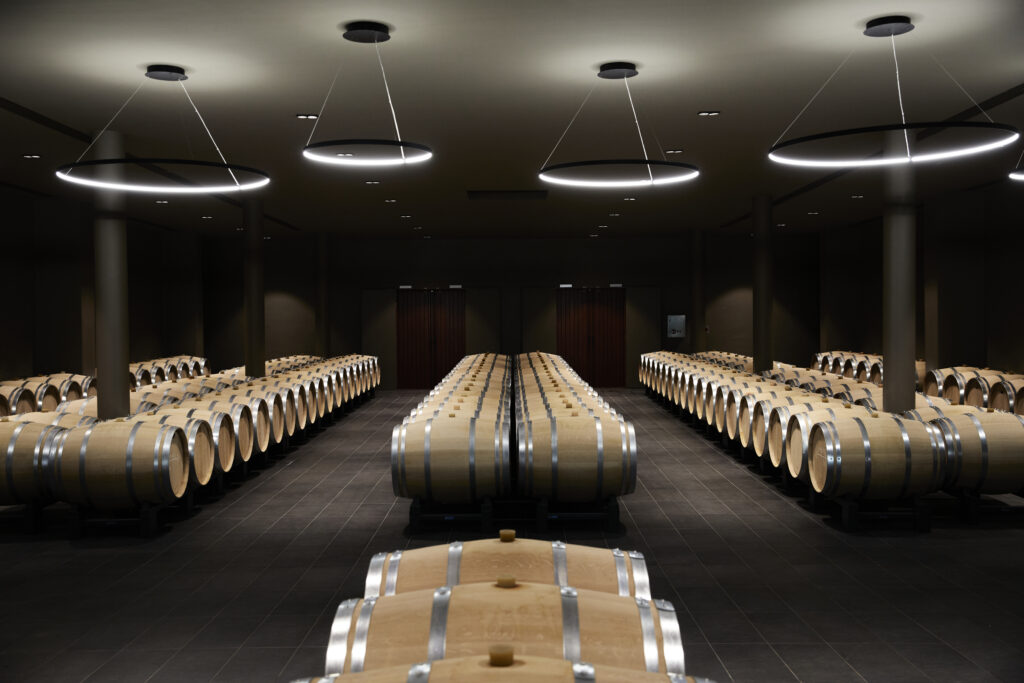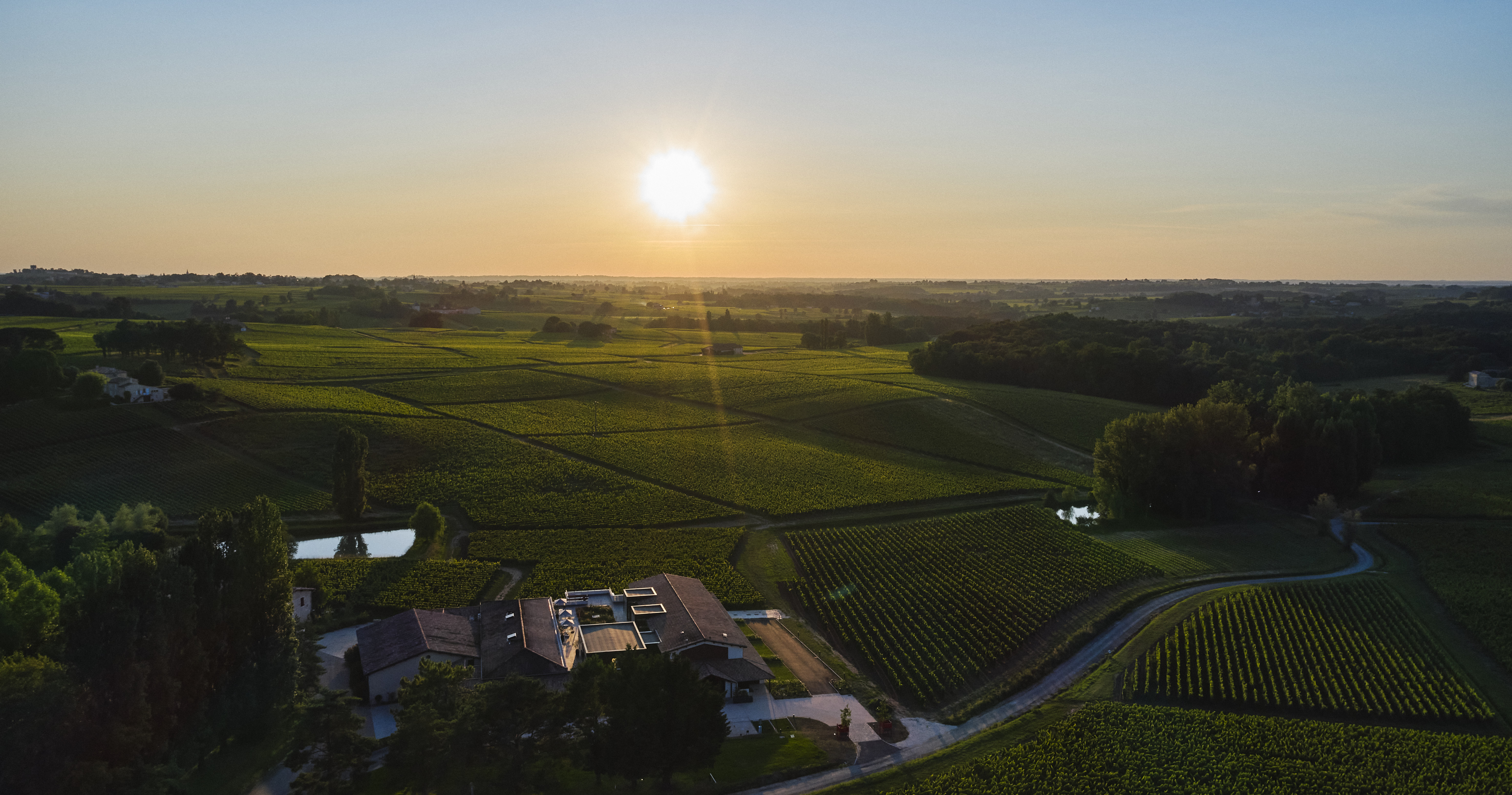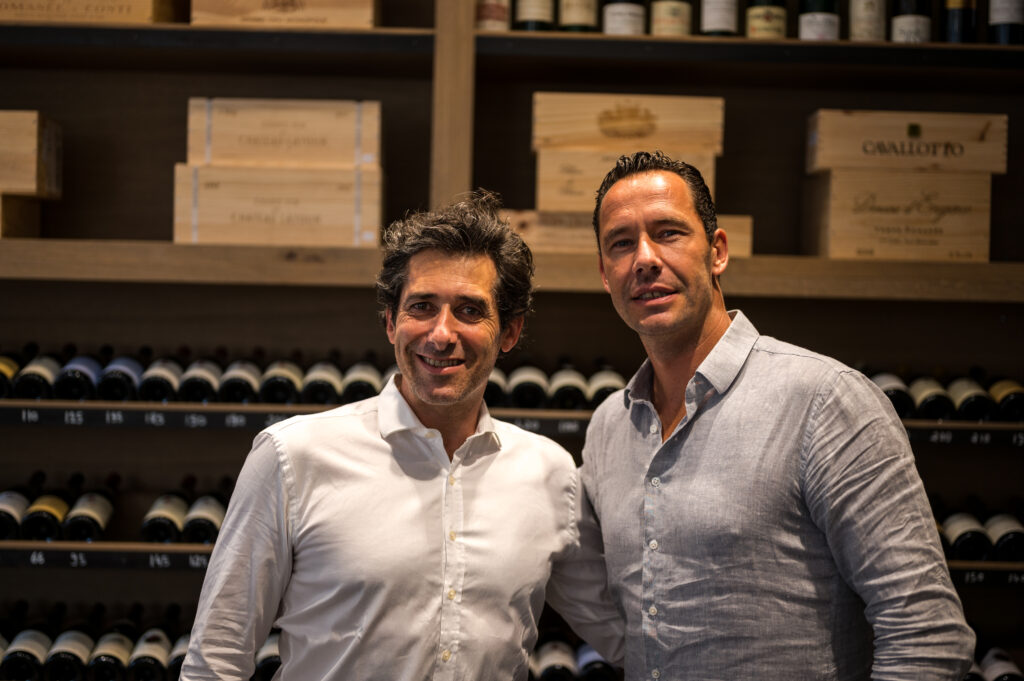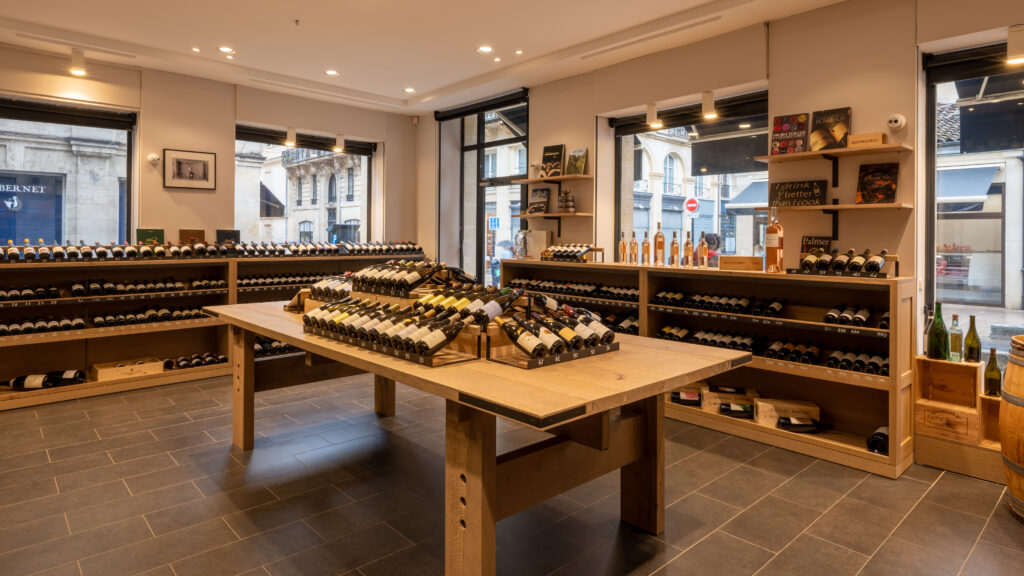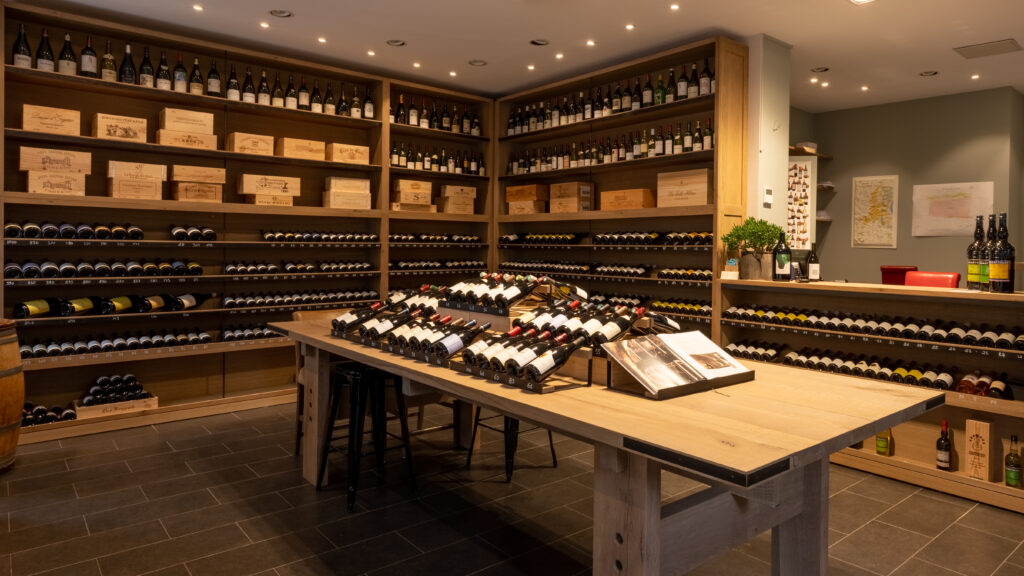OK.
This is a blog about Bordeaux, but I’m not close-minded. That’s why I also love visiting other wine-producing regions.
Seeing as I had already visited the Port and Madeira wine countries, it was inevitable that I should end up in Jerez de la Frontera one day or another…
That day (in fact, three of them) came in October 2021 and was certainly helped by the fact that there are direct flights from Bordeaux to Seville. Jerez is only an hour away by train.
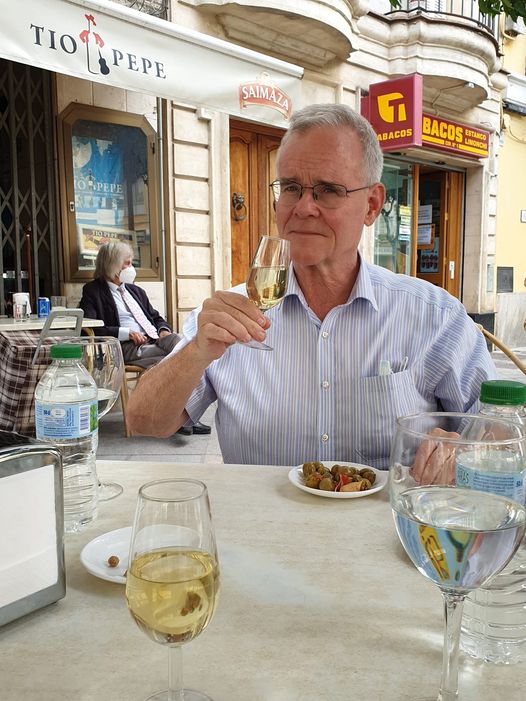 The first thing my wife Christine and I did upon arriving in Jerez, a city of some 200,000 inhabitants, was to find a nice café and imbibe a fino sherry to get into the spirit of things. Fino is bone dry and very refreshing. With an alcoholic degree between 14.8 and 15.4°, it is hardly any stronger than numerous unfortified table wines. Furthermore, it’s a wine that’s intrinsically light on its feet – the perfect aperitif. Furthermore, it’s a wine that’s intrinsically light on its feet – the perfect aperitif. I guarantee that sipping one while munching salted almonds and outsize Seville olives will make the world seem like a better place…
The first thing my wife Christine and I did upon arriving in Jerez, a city of some 200,000 inhabitants, was to find a nice café and imbibe a fino sherry to get into the spirit of things. Fino is bone dry and very refreshing. With an alcoholic degree between 14.8 and 15.4°, it is hardly any stronger than numerous unfortified table wines. Furthermore, it’s a wine that’s intrinsically light on its feet – the perfect aperitif. Furthermore, it’s a wine that’s intrinsically light on its feet – the perfect aperitif. I guarantee that sipping one while munching salted almonds and outsize Seville olives will make the world seem like a better place…
We settled into our hotel in the old part of Jerez, a city that was ruled by the Moors from 711 to 1231. Their influence is unquestionably there to this day, most obviously in the town’s architecture.
Enjoying the balmy 30° weather, we wended our way to eat dinner at Lù, a Michelin-starred restaurant, appreciating the subtle aroma of orange trees lining the streets. Many of my wineloving friends are wary of tasting menus with matching wines. They prefer to be in control of which wine goes with what food and are especially wary of open bottles. We nevertheless took the plunge and were treated to a dizzying succession of inventive variations of local dishes in the nouvelle cuisine mold. Here is the menu and just some of the wines we enjoyed!
The waiter said that two of the wines would be served blind, a challenge I always enjoy. I took one of them to be a Manzanilla, but my wife wondered if it not might be a Jura wine (made with flor, just like Sherry) instead. Lo and behold, she hit the nail on the head! My mouth dropped open and I discovered yet another reason to think I had married an exceptional woman.
Here are is the menu and some of the wines served with the meal. This was a brilliant opportunity to see how well Sherry goes with food.
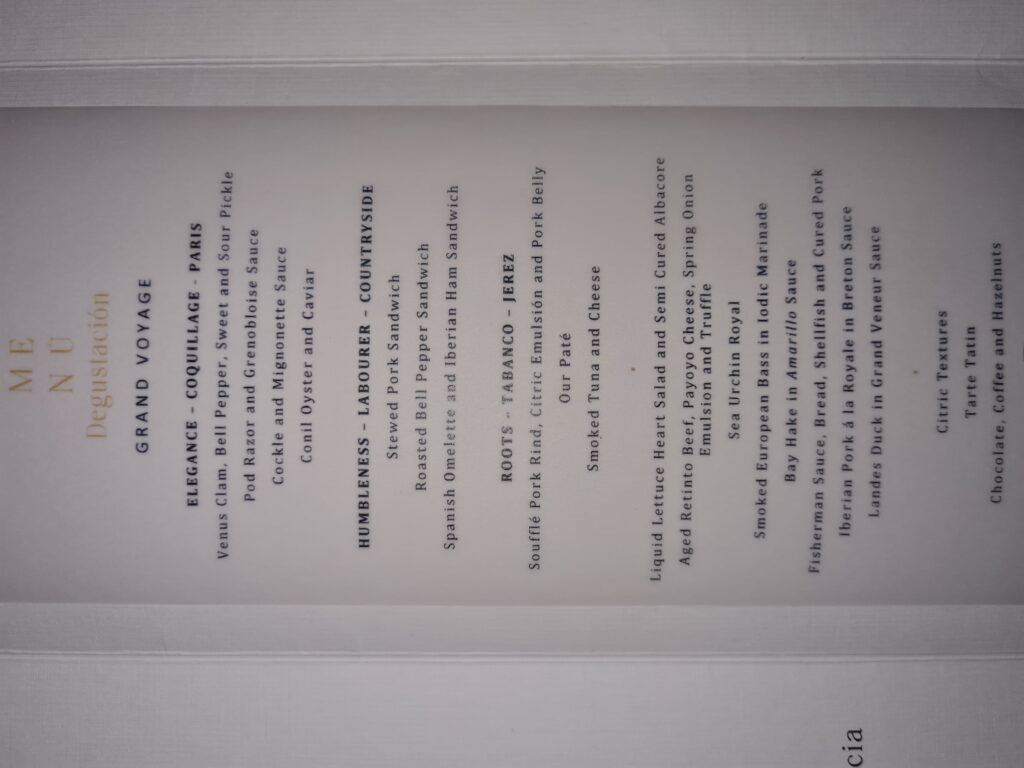
Our one appointment the next day was at Bodegas Tradición a relatively small, very up-market producer. We were welcomed by Eduardo Davis, whose knowledge of Sherry is nothing short of encylopedic. Thanks to an English grandfather and schooling in the UK, his ability to explain complicated things in the language of Shakespeare was dazzling. I say complicated because the production of Sherry reminds me of Champagne in that there are a great many technical aspects, some of which had puzzled me for years (such as the difference between Amontillado and Palo Cortado), and which Eduardo cleared up efficiently and in a way the layman could understand.
Like Champagne, Sherry is made from wines largely produced by independent growers. The key is not only sourcing these, but blending and ageing them, using the famous solera system. Bodegas Tradicón may have been founded in 1998 by Mr. Joaquín Rivero, but “Bodega CZ, J.M. Rivero”, the oldest known sherry house, dates back to 1650. The firm focuses on very old sherry that is neither cold-filtered, stabilized, nor clarified. The wines are unsweetened and unsulphured.
We tasted through the entire range, including fino sherries at various stages of ageing, during what turned out to be an intense master class – an unforgettable experience lasting over three hours.
The wines were some of the best we sampled over three days and their positioning in terms of pricing and reputation seemed perfectly justified.
Bodegas Tradición specializes in two categories of sherry, introduced in 2001, that I was unfamiliar with: VORS, i.e. Very Old Sherry aged for more than 20 years and VORS, or Very Old Rare Sherry aged for at least 30 years. These are the crème de la crème of sherries. There is another reason that a visit to Tradición is unforgettable. They have a marvelous gallery of oil paintings including works by such artists as Murillo, Valequez, Goya, etc
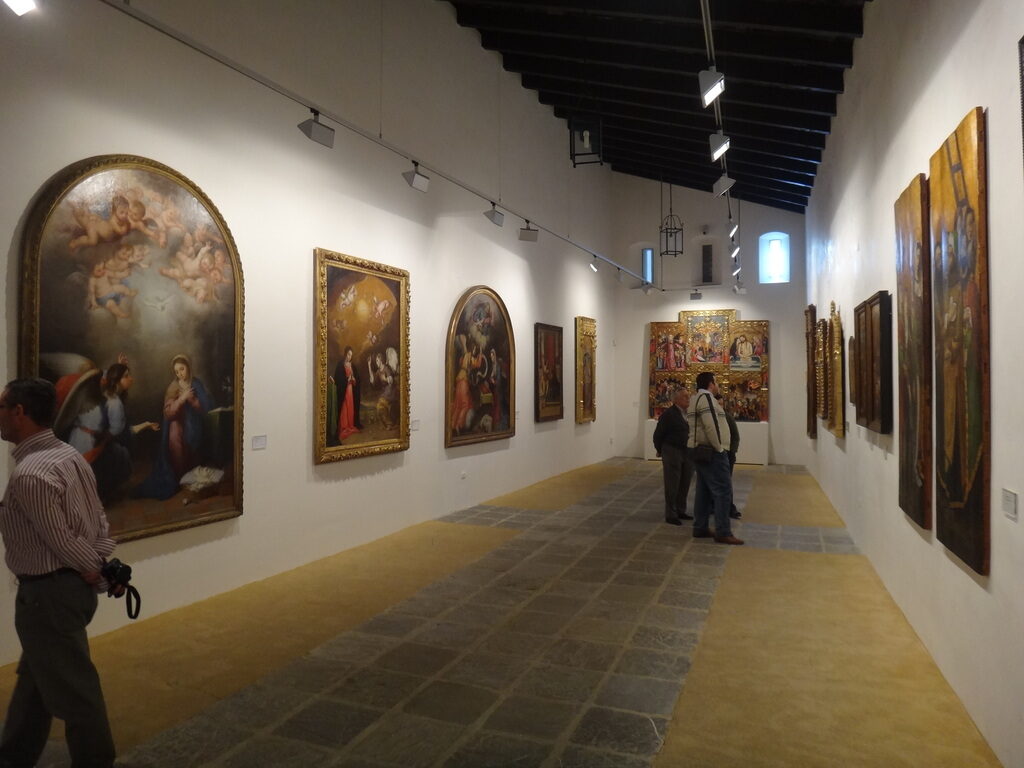
We spent the afternoon visiting Jerez’s two main tourist attractions, the 17th century Saint Sauveur cathedral and the 12th century Alcazar, built during the Muslim period. By the way, eight towns in Spain are called “de la Frontera” since they stood at the border between Christian and Muslim territories.
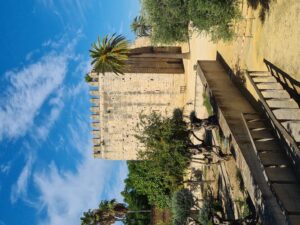 That evening we went to another fine (and much more affordable) restaurant called Carbona. Once again we sampled sherry with several courses, and if you have never tried this, you should!
That evening we went to another fine (and much more affordable) restaurant called Carbona. Once again we sampled sherry with several courses, and if you have never tried this, you should!
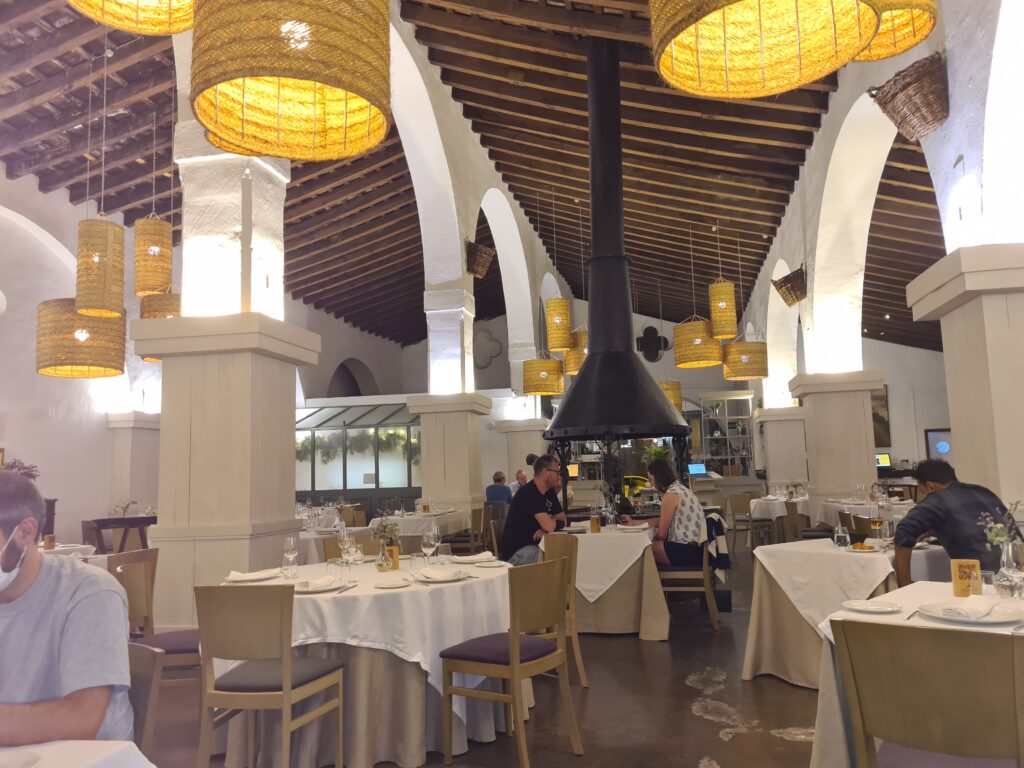
Claret lovers are familiar with Bordeaux bashing in recent years that saw the wines denigrated and castigated for being too expensive (evidencing more than a little of the “fox and the grapes” syndrome with regard to pricing…). Sherry has gone through a period of falling out of fashion as well, but for different reasons. The image was of an old-fashioned wine consumed by vicars and maiden aunts out of tiny cut crystal glasses. Then came the trend for Cream Sherry, that all but obliterated familiarity with other wines from the sherry region, starting with the delicious bone dry varieties. Sales fell off sharply and it is an uphill battle to rehabilitate the wine’s image. The creation of the VOS and VORS categories have helped here. Edouardo Davis of Bodegas Tradición also feels that there is a future for table wines made from the Palomino grape.
Our last day in Jerez was spent visiting two other bodegas.
The first was also the largest producer of all, Gonzalez Byass, founded in 1835 by Manuel Maria Gonzales Angel, who later went into partnership with his English agent, Robert Blake Byass.
Manuel Maria innovated by exporting a light fino sherry that he named Tio Pepe in honor of his uncle. This has since become an international brand sold in 120 countries. Approximately three million bottles of Tio Pepe are shipped every year!
So, Gonzales Byass is a big business. However, if small if beautiful, big certainly doesn’t mean ugly! Like other large firms, Gonzales Byass have a number of wines well worth investigating alongside their flagship product. Furthermore, they are the only house in Jerez to make their own brandy, which is also a huge seller. As if this weren’t enough, they own vineyards in other parts of Spain (Rioja, Castilla la Mancha, Somontano, Rias Baixas, etc.) and wine tourism plays an important role at their Jerez cellars. Thousands of tourists visit every year, many from cruise ships stopping over in nearby Cadiz.
The Gonzales Byass cellars are so vast that visitors are taken around in a small train. My wife and I had the privilege of touring instead in a golf cart driven by Sylvain Vieille-Grosjean, who is half-French and has lived most of his life in Jerez. Sylvain told us all about Gonzales Byass as we zipped through the cathedral-like bodegas at a good clip. It is impossible not to be struck by the sheer scale of things. The traditional La Concha and Apostles cellars are especially noteworthy.
Factoid: the weathervane showing Tio Pepe in his red coat, tilted Spanish hat, and guitar is officially recognized as the world’s largest by Guinness.
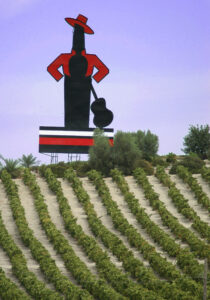
We tasted through ten wines with Sylvain, going from the inevitable Tio Pepe through Amontillado, VORS Amontillado, Oloroso, Palo Cortado, Medium, Cream, VORS Cream, Pedro Ximenez, and VORS Pedro Ximenez. This extended tasting was an excellent way of becoming familiar with the full range of sherry, and the wines were all very good. It is no reflection whatsoever on their quality if I write that I was not enamoured of the two P.X.s. Although a fan of many dessert wines (Sauternes, Port, Madeira, etc.), these were simply too sweet for me, with some 400 grams/liter for the VORS version.
Gonzales Byass were the first sherry house to produce a type called En Rama. The story Sylvain told me is that a buyer from the Wine Society in England tasted a “raw”, i.e. unfiltered fino from barrel and asked the firm to bottle it as such. They did so, despite reservations about the wine’s stability, and it was a great success. The style has since been copied by other houses and it is hoped that it will help contribute to sherry’s renaissance.
95% of sherry is made from the Palomino grape (the rest being P.X. and Moscatel) and the wine has traditionally been aged in butts made of American oak. As opposed to table wines, these are not regularly replaced, the interaction sought being quite different from table wines. Used barrels are often sold to Scotch whisky producers to give a special “sherry finish”.
Our last visit in Jerez was to Bodegas Emilion Lustau, founded in 1896. Lustau are one of the major players on the sherry scene and much esteemed on export markets.
The cellars are possibly even more cathedrallike than those at Gonzalez Byass and are likewise a major tourist attraction.
We went around various parts of the bodega with Isabel who spoke good English. When I tasted a fino, I said that it was “poised”, a word she hadn’t ever encountered. It’s a bit of an abstract description, agreed, but it seems to sum up the house style (or perhaps focused and balanced…).
-
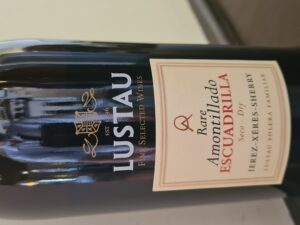
-
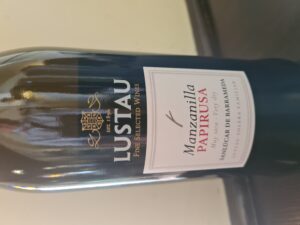
-
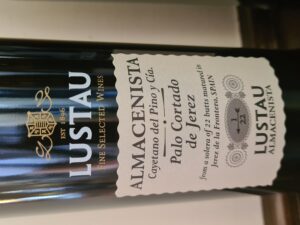
-
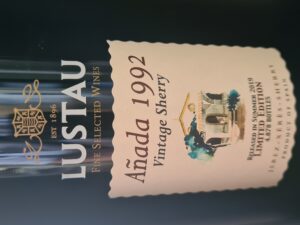
-
A rare, and delicious vintage sherry
Lustau are famous for several reasons: their La Ina wines (a major brand taken over from the house of Domecq), their original proprietary bottle, and their almacenista range of about ten wines. This word best translates as “warehouse keeper” and describes small producers of sherry, either from their own vines or those of others, who traditionally have sold on to major houses. Lustau decided to bottle and market their wines individually, and even went so far as to register almacenista as a brand name. These unique wines are especially worth discovering, as is their especialidas range including VORS wines, a vintage sherry, and the unusual East India Sherry (an aged blend of Oloroso and Pedro Ximénez).
Our trip to Andalusia ended with 3 days in Seville, a city I’d love to go back to. A recounting of our time there doesn’t really belong in a wine blog, so here are just a few photos, and I must mention that I enjoyed a flamenco performance there more than I ever would have believed.
-

-
Tomb of Christopher Columbus in Seville cathedral
-

-
The Alcazar of Seville
-
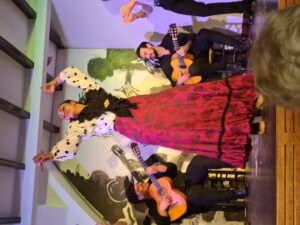

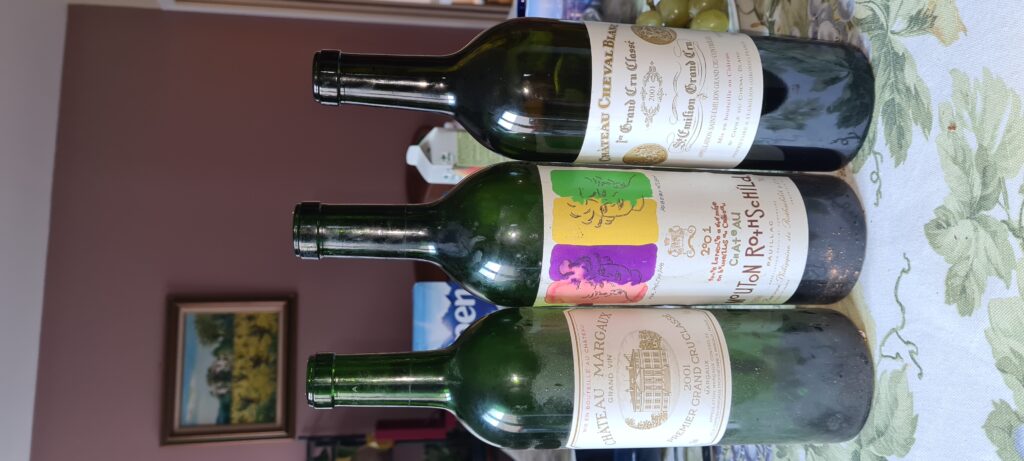
 The first thing my wife Christine and I did upon arriving in Jerez, a city of some 200,000 inhabitants, was to find a nice café and imbibe a fino sherry to get into the spirit of things. Fino is bone dry and very refreshing. With an alcoholic degree between 14.8 and 15.4°, it is hardly any stronger than numerous unfortified table wines. Furthermore, it’s a wine that’s intrinsically light on its feet – the perfect aperitif. Furthermore, it’s a wine that’s intrinsically light on its feet – the perfect aperitif. I guarantee that sipping one while munching salted almonds and outsize Seville olives will make the world seem like a better place…
The first thing my wife Christine and I did upon arriving in Jerez, a city of some 200,000 inhabitants, was to find a nice café and imbibe a fino sherry to get into the spirit of things. Fino is bone dry and very refreshing. With an alcoholic degree between 14.8 and 15.4°, it is hardly any stronger than numerous unfortified table wines. Furthermore, it’s a wine that’s intrinsically light on its feet – the perfect aperitif. Furthermore, it’s a wine that’s intrinsically light on its feet – the perfect aperitif. I guarantee that sipping one while munching salted almonds and outsize Seville olives will make the world seem like a better place…
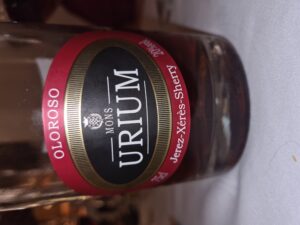
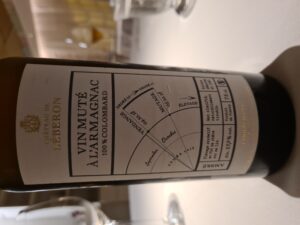
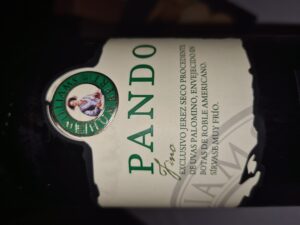
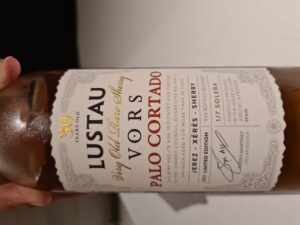

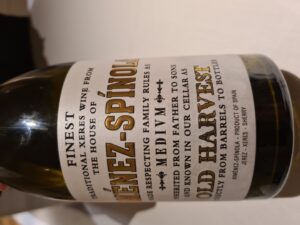

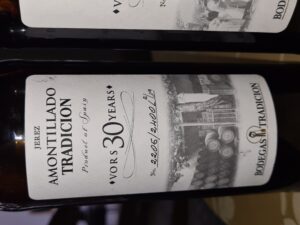
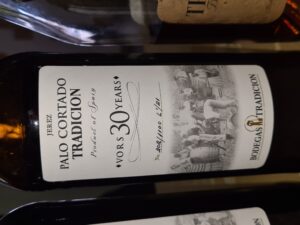

 That evening we went to another fine (and much more affordable) restaurant called Carbona. Once again we sampled sherry with several courses, and if you have never tried this, you should!
That evening we went to another fine (and much more affordable) restaurant called Carbona. Once again we sampled sherry with several courses, and if you have never tried this, you should!

